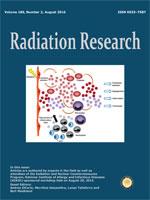This article reviews our current knowledge about cell-derived extracellular vesicles (EVs), including microparticles and exosomes, and their emergence as mediators of a new important mechanism of cell-to-cell communication. Particular emphasis has been given to the increasing involvement of EVs in the field of radiation-induced vascular injury. Although EVs have been considered for a long time as cell “dust”, they in fact precisely reflect the physiological state of the cells. The role of microparticles and exosomes in mediating vascular dysfunction suggests that they may represent novel pathways in short- or long-distance paracrine intercellular signaling in vascular environment. In this article, the mechanisms involved in the biogenesis of microparticles and exosomes, their composition and participation in the pathogenesis of vascular dysfunction are discussed. Furthermore, this article highlights the concept of EVs as potent vectors of biological information and protagonists of an intercellular communication network. Special emphasis is made on EV-mediated microRNA transfer and on the principal consequences of such signal exchange on vascular injury and radiation-induced nontargeted effect. The recent progress in elucidating the biology of EVs has provided new insights for the field of radiation, advancing their use as diagnostic biomarkers or in therapeutic interventions.
How to translate text using browser tools
26 July 2016
Extracellular Vesicles and Vascular Injury: New Insights for Radiation Exposure
Stéphane Flamant,
Radia Tamarat
ACCESS THE FULL ARTICLE
<
Previous Article
|

Radiation Research
Vol. 186 • No. 2
August 2016
Vol. 186 • No. 2
August 2016




